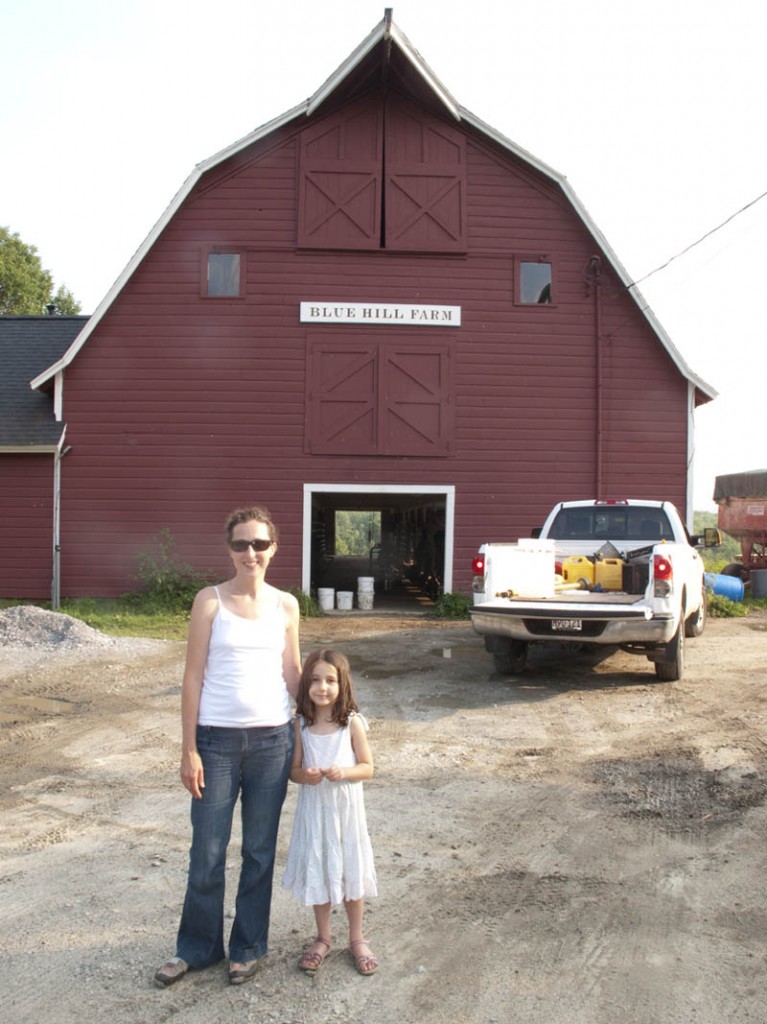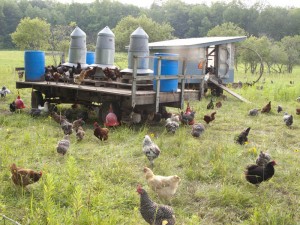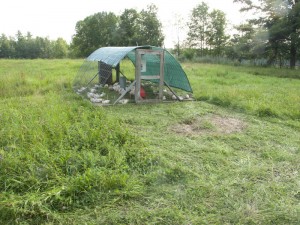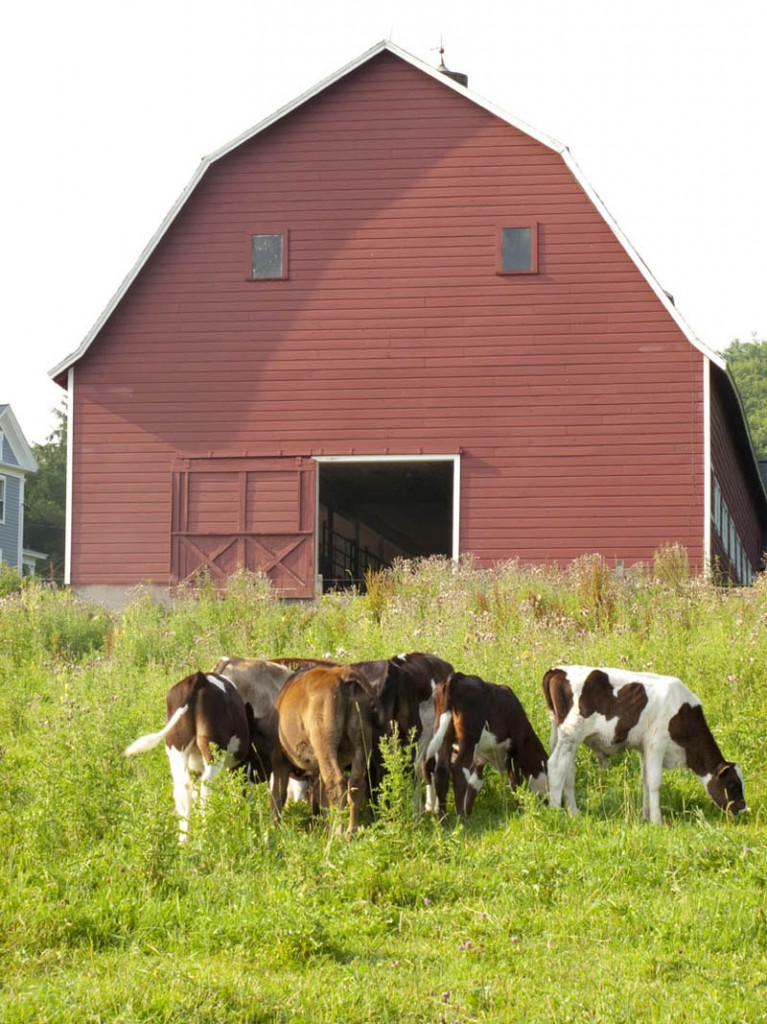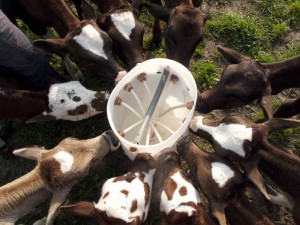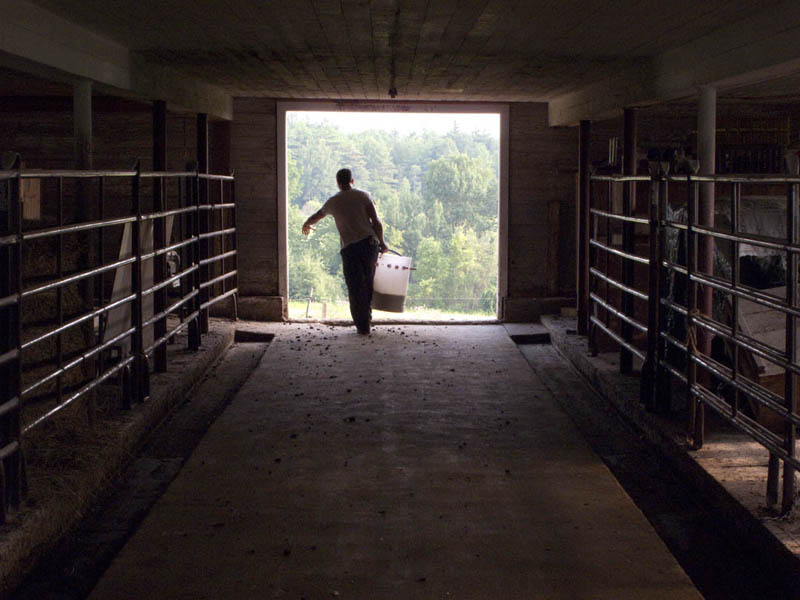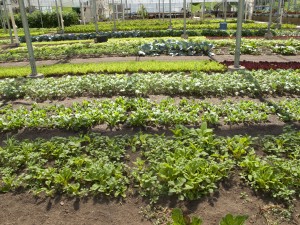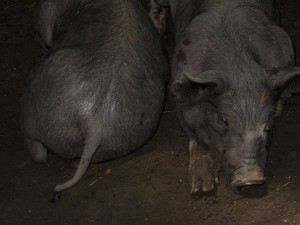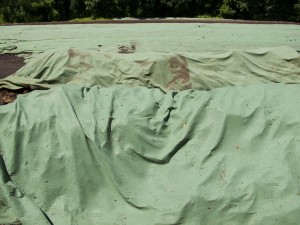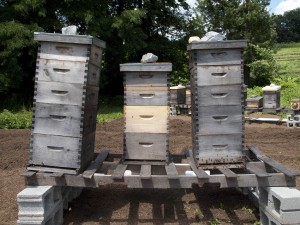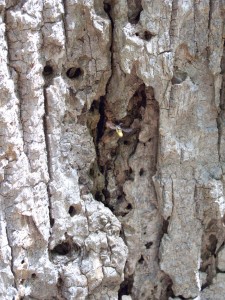I just watched the movie Food, inc., which I recommend to everyone. If you haven’t had the time to read Omnivore’s Dilemma, it condenses the information well. If you already know about most of the issues, as I did, it renews your commitment to buying the most local and naturally raised food available.
I was talking about the movie with a friend the other day and we were specifically talking about organic and bio-dynamically raised meat. I have to admit that this is something that I haven’t incorporated into my diet as much as I could/should. We usually order Bell and Evans or Murray’s chickens from our butcher, but have had some suspicions about the veracity of the being the real deal. (other butcher’s we’ve gotten them from have had Murray’s tags on the chickens and our butcher’s doesn’t) I bought an Eberly chicken, which Neil roasted on the bbq last night. It was flavorful and delicious. They come shrink-wrapped, so it’s impossible to substitute some factory-farmed chicken for one of theirs.
My friend mentioned a local bio-dynamic angus farm called Grazin’ Angus Acres. I am lucky enough that they come to my local farmer’s market every sunday. Below I put a blurb from their website that gives some information on why to eat grass-fed beef over corn-fed beef.
Ultimately it’s healthiest for you, the animals and the planet not to eat meat, but if that isn’t an option for you, switching to grass-fed is a much healthier and humane option.
Health Benefits of Eating Grass-Fed Beef:
Safety: Because humans are omnivores, our stomachs are highly acidic. Meanwhile, the pH of grass-fed cattle is normal. If Grass-Fed Black Angus happen to be carrying bacteria in their normal pH environment, our highly acidic stomach bath offers real protection. Contrast that with corn-fed cattle… Corn turns what is typically a normal pH environment into a highly acidic one. Consequently, corn-fed cattle often require antibiotics in the feed to keep them from being sick, which generates its own set of concerns for human health. Further, if corn-fed cattle carry bacteria (e.g. E-Coli) that is thriving in their now acidic environment, the acids in our stomachs offer little, or no, protection against it.
Omegas: Grass-fed meat has been shown to have a 60% + increase in omega-3 content, as well as a more favorable omega-6 to omega-3 ratio. Both fatty acids are essential and must be obtained from food. It is important to maintain a balance of omega-3 and omega-6 in our diets, as these two substances work together to promote health. That balance is adversely affected when cattle are fed grain. Specifically, a grass-fed diet produces a 2:1 omega 6:3 ratio. “Why should I care?” you ask…
Consider that omega-6 promotes inflammation, blood clotting, and tumor growth while omega-3 does the opposite. Dietary experts estimate that current eating habits in America lead to an omega 6:3 ratio of about 20:1. Grass-fed beef is a huge step in the right direction.
ProVitamin A / beta-carotene: Beta-carotene is a fat-soluble vitamin & antioxidant that is a safe dietary source of vitamin A. Vitamin A is important to normal vision, bone growth, reproduction, cell division and cell differentiation. Grass-fed beef has a 10-fold increase in beta-carotene levels vs. grain-fed. Taking vitamin A supplements can be dangerously toxic – but, we can eat all the beta-carotene possible and the human body will only convert the amount needed to vitamin A.
Vitamin E / alpha-tocopherol: Vitamin E is also a fat-soluble vitamin / antioxidant that protects cells from the effects of free radicals (which have been reported to contribute to cancer and cardiovascular disease development). Grass-fed beef increases alpha-tocopherol levels three-fold vs. grain-fed beef.
Conjugated Linoleic Acid (CLA): Numerous health benefits have been attributed to CLA including reduced carcinogenesis, atherosclerosis, onset of diabetes and body mass. Grass-fed cattle have been shown to produce 2 to 3 times more CLA than grain-fed cattle.
IT’S NATURAL! Nature had it right all along. The sun’s energy grows the grass that is harvested by the cattle that are harvested by us. Grass-fed is how it was meant to be; it’s how our human construct was prepared to capture the nutritional value of meat. The industrial machine – feeding cattle corn in confined areas – has destroyed what nature intended.
Begin to enjoy the benefits of local Grass-Fed Black Angus today!

